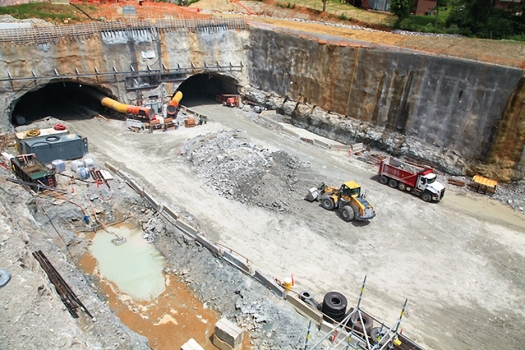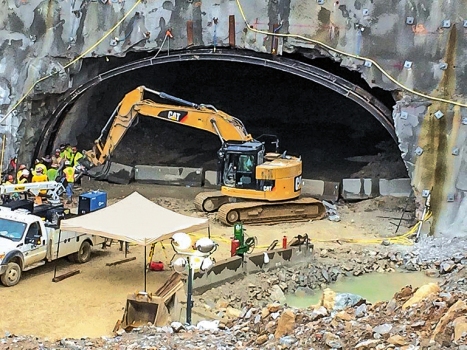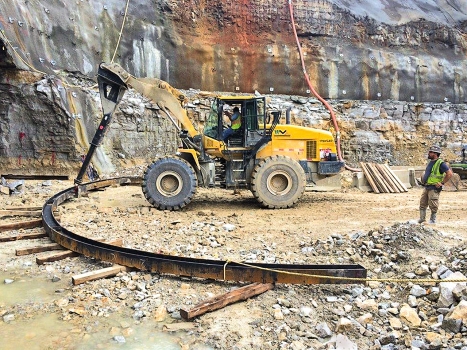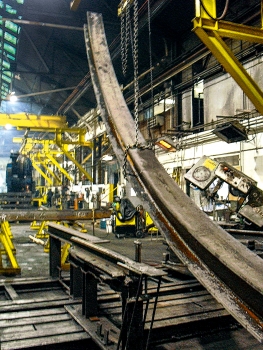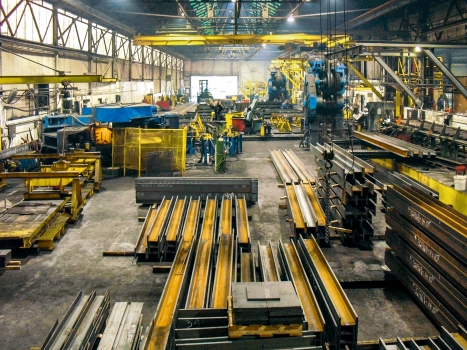Steel ribs ensure safe advancement of Drumanard Tunnel, USA
North-east of Louisville, Kentucky, USA, the Ohio River Bridges - East End Crossing Project is underway. This project will close the last remaining gap in the I – 265 freeway. The first part of the construction project includes the construction of a stay cable bridge spanning the Ohio River. Further along, the highway then continues into a tunnel in order to preserve a historical building and gardens that are located on the new route. The 518 m long Drumanard Tunnel is located in the town of Prospect and is being built as a twin drive with two lanes per tunnel tube.
Media
The original excavation plan of the north and south drives was to create approx. 16.8 m (55 ft.) wide and 9.5 m (31 ft.) high horseshoe shaped tunnels. The jobsite is primarily located within a large dolomite formation which is just below a uniform shale formation. In the beginning, the excavation sequence was carried out using the drill and blast method. The initial support system included various bolts consisting of DYWIDAG THREADBAR® as well as shotcrete.
A portion of the tunnel crown had collapsed
In September 2014, DSI received an urgent call from the contractor: A portion of the tunnel crown had collapsed at the north end. Presumably, the rock strata had developed some separation due to heavy rainfall. The estimated rock fall was approx. 91 m (300 ft.) long, 15 m (50 ft.) wide and 3 m (10 ft.) deep. Fortunately, no one was in the tunnel at the time of the fall. Immediately, a DSI delivery of additional bolts, resins and hardware were on their way to the jobsite to stabilize the site conditions. As the days unfolded, DSI committed itself completely to supporting the contractor's efforts with an array of alternative analyses. Ultimately, a revised excavation plan was jointly determined.
The new ground support products used were steel horseshoe sets consisting of W8 x 67 beams, fabricated in seven segments to ensure easy installation. As the excavation consisted of a heading and bench sequence, wall beams were included on each side of the tunnel, allowing for bench excavation and successive post installation, thus completing the full set.
Each set is spaced at 1.5 m (5 ft.) centre to centre utilizing DYWIDAG THREADBAR® as spacers. The new excavation sequence continued to employ drill and blast, but limited the advance to 6 m (20 ft.), or four steel sets per day. Once the rib sets were installed, steel lagging was installed above the sets, and all voids above the interim support structure were filled with concrete.
Thanks to the steel rib sets, work advanced regularly and ahead of schedule without any interruption. DSI continued to produce steel sets at a pace matching the contractor's advance. The contractor was very satisfied with the solution proposed by DSI for the challenging tunnel advancement.

